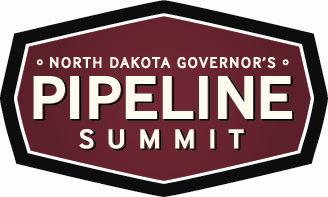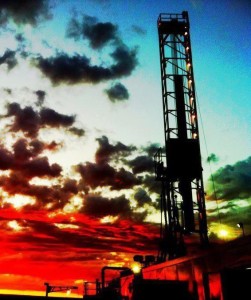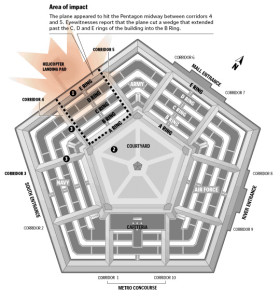 By Kevin Smith, San Gabriel Valley Tribune
By Kevin Smith, San Gabriel Valley Tribune
Chevron Gas station prices, unleaded gas $4.53 with Super unleaded at 4.69 on the corner of La Crescenta Ave. and Honolulu Ave. in Montrose, Ca on Tuesday, April 15, 2014. (Keith Birmingham Pasadena Star-News)
Southland gas prices have risen dramatically in recent days, and one industry expert figures they’ll remain above $4 a gallon until September.
The average price for a gallon of regular gas in Los Angeles County was $4.30 Wednesday, up 17 cents from a week ago and up 26 cents from a month ago, according to AAA’s Daily Fuel Gauge Report.
California’s average price for regular was $4.19 a gallon Wednesday, topped only by Hawaii’s average price of $4.32 a gallon.
“I think it will level off now, but prices won’t fall below $4 a gallon until September,” said Bob van der Valk, senior editor for the Bakken Oil Business Journal. “It’s because of the lack of supply … there’s just no backup supply.”
Jeffrey Spring, a spokesman for the Automobile Club of Southern California, linked the price hikes to several factors.
“Most of our refineries should be through with the turnaround maintenance that’s involved when they convert from winter-grade to summer-grade gas,” he said. “But two refineries — the Chevron refinery in El Segundo and the Exxon Mobil refinery in Torrance — will still be down for a couple more weeks.”
Van der Valk said the Tesoro Golden Eagle Refinery in Martinez is also experiencing problems. Those issues have served to reduce California’s supply of gasoline. Refineries are also exporting more gas overseas, Spring said, which further erodes California’s in-state supply. Spring also noted that ethanol costs have risen because producers are having a hard time getting enough tanker cars to move their product by rail.
“Many of those cars have been diverted to move oil from the Bakken Reserve in North Dakota,” he said. California has 20 refineries that collectively produce about 42 million gallons of gas per day.
The state’s refineries produced more than 6.4 million barrels of gas for in-state use for the week that ended April 4, according to the California Energy Commission. That was down 4.1 percent from the previous week but up 2.3 percent from the same period a year ago.
Production of non-California gas for export rose 35.8 percent for the week that ended April 4 to more than 1 million barrels, the commission reported. Year-over-year production of gas for export rose 19.5 percent.
Despite the price spike, business was brisk at the Woodland Hills 76 Station at the northwest corner of Topanga Canyon and Burbank boulevards on Wednesday where regular was flowing at $4.30 a gallon, midgrade at $4.39, premium at $4.48 and diesel at $4.00.
Drivers were mildly surprised to discover this fill-up was going to cost more than the last one but realized it’s become a common occurrence this time of year.
Canoga Park residents Scott and Ilene Hastie, heading to the beach with their two grandchildren, were filling the tank of their 1987 Toyota Land Cruiser. “It’s still going,” said Ilene Hastie as the dollars continued rolling on the pump’s counter. The bill eventually came to $86.91 cents. “It usually doesn’t cost this much,” she said.

Ilene Hastie and husband Scott finish filling up their Toyota Land Cruiser stopping on their way to the beach at a gas station in Woodland Hills. (Photo by Hans Gutknecht/Los Angeles Daily News)
Woodland Hills resident Dean Atkinson, a general contractor, was topping off his Chevy Silverado truck with diesel when the pump’s meter hit $95.
“This truck, I get about 12 miles to the gallon if I’m pulling a trailer. If the wind is behind you, you might get 15,” said Atkinson, who spends about $1,000 a month on fuel for the Chevy and a Toyota Tacoma. He had just returned from a trade show in Las Vegas and towed a 21-foot trailer. The fuel tab for that trip was about $300.
He’s got a cost-cutting plan.
“It’s at the point now where I will drive the smaller truck when I can. That one gets about 22 miles to the gallon,” he said.
Woodland Hills resident Allen Rivas, who works behind the counter, said that prices there actually down from Tuesday after rising about 20 cents in the last week or so.
No one has complained, he said.
“Nobody. They need it,” he said of the fuel.
Don Garrison is also feeling the squeeze. Garrison, who owns Simply Discount Furniture in Santa Clarita, said his company makes about 50 deliveries a week throughout the Santa Clarita Valley, Antelope Valley, Ventura and Los Angeles.
“It’s definitely affected us, but we haven’t passed that along to our customers yet,” he said. “We’re trying to absorb the costs to keep our prices down. But it really depends on the amount of time that the prices stay up. If they stay up for say a month … then we’ll have to adjust our delivery charge.”
Playa del Rey Florists is losing money on its deliveries, owner Lance Williams said. The company does about 130 deliveries a week.
“It’s very hard because it comes so fast and there’s nothing you can do to really plan for it,” he said. “It’s almost a non-recoupable item because there is only so much someone is willing to pay for delivery.”
On Tuesday, the cheapest Los Angeles-area price could be found at an Arco station at 15705 Nordhoff St. in North Hills, which posted regular at $3.98 a gallon. But prices at some of the region’s other outlets were alarmingly high.
A Chevron station in Los Angeles and a Mobil station in North Hollywood both were selling regular for $5.19 a gallon. And scores of other locations listed regular at $4.89 or higher.
 “We really didn’t think prices would get this high,” Spring said. “We’ll just have to hang on tight to our wallets because we’re over $4 a gallon by a significant amount.”
“We really didn’t think prices would get this high,” Spring said. “We’ll just have to hang on tight to our wallets because we’re over $4 a gallon by a significant amount.”
Reach the author at Kevin.Smith@sgvn.com or follow Kevin on Twitter: @SGVNBiz. Retrieved: http://www.presstelegram.com/business/20140416/los-angeles-gas-prices-soar-above-4-only-hawaii-pays-more








 Aaron Flint is the host of the popular statewide talk radio show “Voices of Montana.” In addition, he serves as the editor of the daily online news and commentary blog “The Flint Report,” recognized by The Washington Post as “one of the best state-based political blogs.” Aaron has also been listed by The Washington Post as one of the best state based political reporters. His work has been featured nationally by the Fox Business Network, The Drudge Report, Huffington Post, Politico and others.
Aaron Flint is the host of the popular statewide talk radio show “Voices of Montana.” In addition, he serves as the editor of the daily online news and commentary blog “The Flint Report,” recognized by The Washington Post as “one of the best state-based political blogs.” Aaron has also been listed by The Washington Post as one of the best state based political reporters. His work has been featured nationally by the Fox Business Network, The Drudge Report, Huffington Post, Politico and others.

 By
By 




